I still remember the first time I saw a pair of Air Jordans. I was 12, couldn’t afford them, but I knew I had to have them. That feeling? That’s exactly what Nike has been bottling up and selling for decades.
According to research from Marketing Charts, 46% of consumers claim they would pay more for high-quality products, and Nike has masterfully capitalized on this trend by positioning itself as a premium athletic brand that delivers exceptional value through innovation and emotional connection.
Table of Contents
-
Why Nike’s Brand Foundation Changed Everything
-
The Digital Marketing Revolution That Set Nike Apart
-
How Nike Turns Data Into Customer Gold
-
Campaign Strategies That Break Through the Noise
-
Innovation Marketing That Creates Demand Before Products Launch
-
The Numbers Behind Nike’s Marketing Dominance
-
Strategic Lessons You Can Actually Use
-
Building Your Own Brand Authority Framework
TL;DR
-
Nike transformed from a product company to a lifestyle brand by mastering emotional connections and cultural relevance
-
Their digital ecosystem combines personalization, predictive analytics, and omnichannel experiences to drive customer loyalty
-
Campaign success comes from hero’s journey storytelling paired with multi-channel integration and performance tracking
-
Product launches use scarcity marketing and staged rollouts to maximize buzz and demand generation
-
Sophisticated attribution modeling helps Nike allocate marketing spend across touchpoints for maximum ROI
-
Market dominance requires proactive competitive intelligence and strategic positioning rather than reactive responses
-
Brand building success depends on consistent messaging, authentic storytelling, and alignment between values and audience aspirations
Why Nike’s Brand Foundation Changed Everything
I’ve watched countless brands try to replicate Nike’s success, but most miss the fundamental shift that happened in their early years. Nike didn’t just sell shoes—they sold the idea that anyone could be an athlete.
The “Just Do It” campaign wasn’t marketing genius by accident. It tapped into something deeper than product features or competitive pricing. When you see those three words, your brain doesn’t think about shoe technology. You think about overcoming obstacles, pushing limits, and becoming better than you were yesterday.

The Psychology Behind “Just Do It”
Here’s what blew my mind when I really dug into this slogan – it’s not actually about Nike at all. Think about it. When someone says “Just Do It,” they’re not telling you to buy shoes. They’re calling you out on your excuses.
I’ve caught myself using this phrase when I’m procrastinating on a workout or putting off that thing I’ve been meaning to start. That’s the genius of it – Nike wedged themselves into your internal monologue. Now every time you hesitate, you hear their voice pushing you forward.
The nike marketing strategy behind this works because it taps into something we all struggle with – that gap between who we are and who we want to be. Most of us have a vision of our better selves, and Nike positioned their brand as the bridge to get there.
Cultural Integration That Actually Matters
You know what separates Nike from every other brand trying to be “culturally relevant”? They don’t chase trends – they bet on them before anyone else notices.
Take the Kaepernick campaign. While every other brand was running focus groups and playing it safe, Nike looked at their customer base and said “These people care more about authenticity than avoiding controversy.” They were right. Sales jumped 31% after that campaign, even with all the backlash.
I remember watching that whole thing unfold on Twitter. People were literally burning Nike shoes, and Nike’s stock was climbing. That’s when you know you’ve built something bigger than just a product company.
The Travis Scott Jordan collab is another perfect example. This wasn’t some corporate suit saying “let’s work with a rapper.” Nike spotted the intersection between sneaker culture and hip-hop before it became obvious to everyone else. Those shoes sell out in seconds because they feel authentic, not forced.
Nike’s partnership with Off-White designer Virgil Abloh exemplifies their cultural integration strategy. Rather than simply licensing their logo to a fashion designer, Nike collaborated on “The Ten” collection, which deconstructed classic Nike silhouettes and reimagined them through Abloh’s artistic lens. This partnership bridged streetwear, high fashion, and athletic performance, creating products that sold out instantly and commanded premium resale prices while establishing Nike’s credibility in luxury fashion circles.
Premium Positioning That Customers Accept
Here’s something that always amazes me about Nike – they convinced us that paying $200 for sneakers is normal. How?
They didn’t compete on price. They competed on story.
When Nike shows you those air bubbles in the sole, you’re not just seeing cushioning technology. You’re seeing proof that these shoes will make you jump higher, run faster, perform better. Whether that’s actually true doesn’t matter as much as whether you believe it’s true.
I have friends who own multiple pairs of the same Jordan model in different colorways. That’s not rational consumer behavior – that’s emotional attachment to a brand story. Nike created a hierarchy where even their “basic” shoes feel premium compared to everything else.
Their athlete partnerships aren’t just endorsement deals—they’re proof points for their premium positioning. When LeBron James wears Nike shoes during a championship game, every consumer watching thinks “those shoes helped him perform at that level.”
The Digital Marketing Revolution That Set Nike Apart
While other brands were still thinking about digital as “let’s put our TV ads online,” Nike was building something completely different. They weren’t just advertising online – they were creating digital relationships.
I downloaded the Nike Training Club app years ago, and here’s what’s wild – it actually helped me get in better shape. That’s not marketing, that’s value. But every time I used it, I was spending time with the Nike brand, building a relationship that had nothing to do with buying stuff.
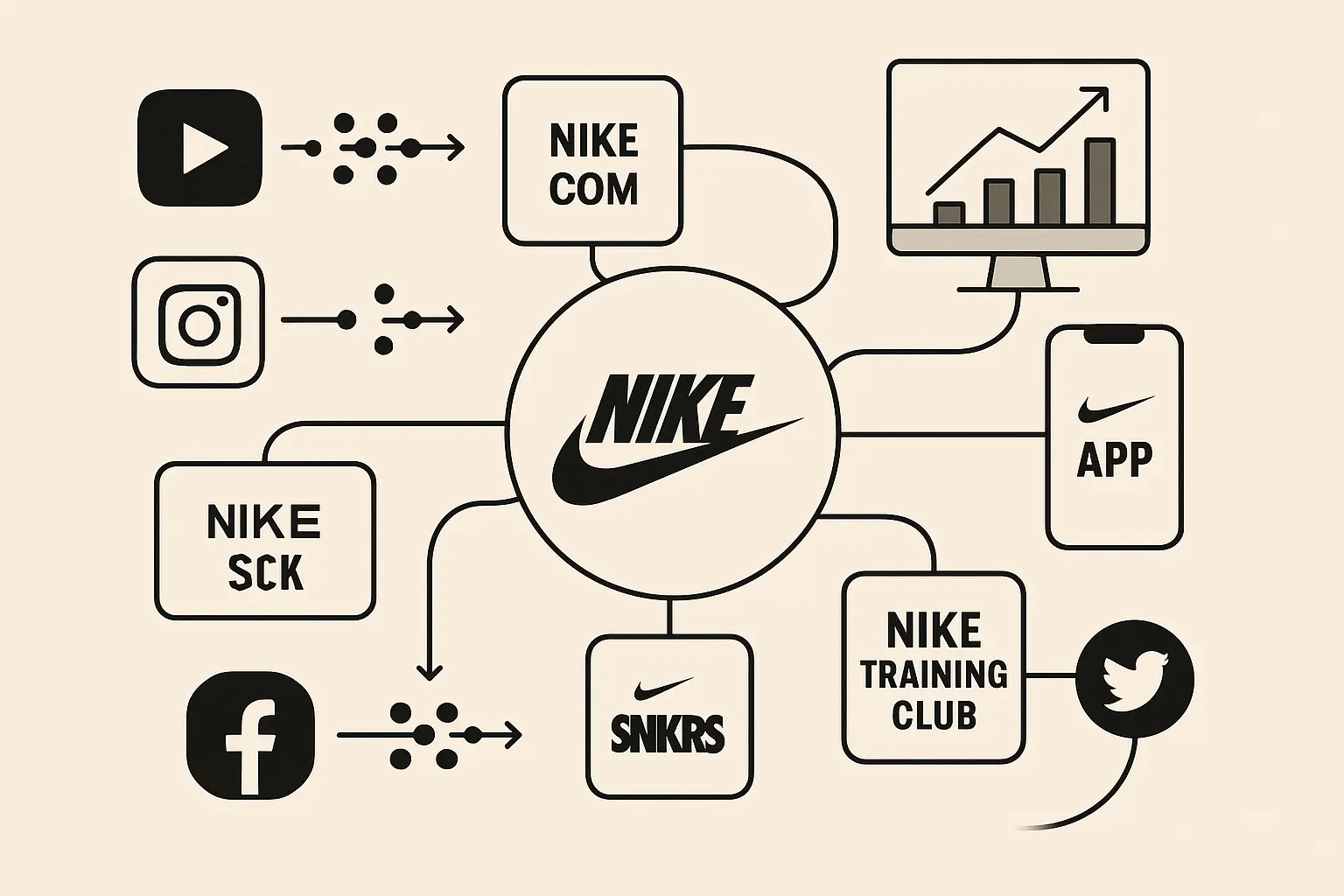
Social Media Strategies That Actually Work
Nike’s Instagram doesn’t feel like a corporate account. Scroll through it right now – you’ll see images that make you want to screenshot them and set them as your wallpaper. They’re not just posting product shots; they’re creating content you actually want to engage with.
During the Olympics, their Twitter becomes this real-time hype machine. They’re not just promoting Nike athletes – they’re celebrating human achievement in a way that makes you feel like Nike is cheering for all of us. That’s how you build brand love.
And TikTok? Nike figured out that platform faster than brands half their size. Instead of polished corporate videos, they’re working with creators who genuinely love their products. The content feels organic because it is organic.
Nike’s social media dominance is evident in their massive following across platforms. According to Simplilearn’s analysis of Nike’s marketing strategy, the brand maintains an enormous social media presence with 196 million followers on Instagram, 35 million on Facebook, 8.9 million on Twitter, and 1.67 million on YouTube, driving amazing traffic and engagement across all channels.
Understanding platform-specific engagement is crucial for success, which is why many brands utilize Instagram engagement rate calculators to measure their social media performance and optimize content strategies for maximum impact.
Influencer Partnerships That Feel Authentic
Nike cracked the code on influencer marketing by focusing on people who were already living the Nike lifestyle. They’re not paying actors to pretend they work out – they’re partnering with real trainers, actual athletes, people who’d wear Nike whether they got paid or not.
I follow this trainer on Instagram who has maybe 30K followers. She posts Nike workout gear constantly, but it never feels like an ad because she’s actually using the stuff. That’s way more convincing than any celebrity endorsement.
The long-term relationship approach is key. These aren’t one-off sponsored posts – Nike builds ongoing partnerships with creators. So when they post about Nike products, it feels like a genuine recommendation from someone you trust.
They also give influencers creative freedom within brand guidelines. The content feels authentic because it reflects the creator’s personal style and voice, not a corporate script. This approach generates higher engagement rates and more genuine audience connections.
How Nike Turns Data Into Customer Gold
This is where Nike gets scary good. They’re not just collecting data – they’re using it to genuinely improve your experience with their brand.
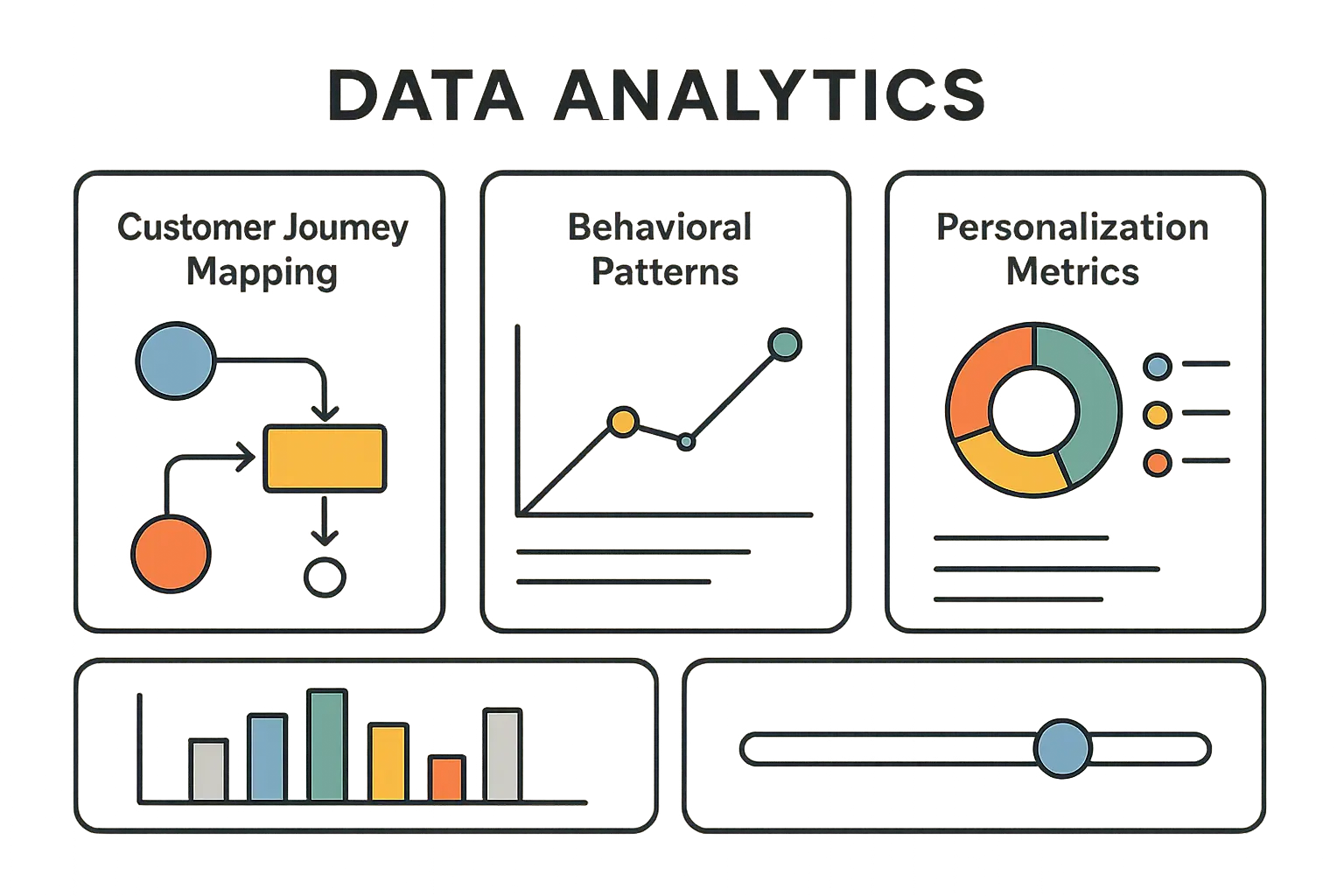
Personalization That Actually Helps Customers
The Nike Run Club app knows I’m a casual runner who prefers shorter distances. It doesn’t try to push marathon training plans on me. Instead, it suggests 3-mile routes and celebrates when I hit my modest goals. That’s personalization done right.
Their product recommendations actually make sense. If you’re training for a marathon in Seattle during winter, you’ll see different gear than someone doing beach workouts in California. It’s not just “people who bought this also bought that” – it’s contextual intelligence.
What I love about Nike’s personalization is that it feels helpful, not creepy. They use your data to make your experience better, not just to sell you more stuff. That builds trust, which makes you comfortable sharing even more data.
The personalization extends to content delivery. Nike’s apps serve up articles, videos, and tips that match your interests and activity level. A beginner runner gets different content than an experienced marathoner, and the system learns from your engagement to refine future recommendations.
Nike’s loyalty program demonstrates the power of personalization, with up to 100 million members who spent three times more than guest buyers, according to Simplilearn’s analysis. This massive engagement reflects how effective personalized experiences can be in driving customer value and retention.
Predictive Analytics That Drive Business Decisions
Nike’s ability to spot trends before they hit mainstream is unreal. They’re analyzing social conversations, search patterns, and cultural signals to identify what’s going to be popular next year.
Think about how they nail limited releases. Those SNKRS drops that sell out in minutes? That’s not luck – that’s predictive modeling telling them exactly how much demand to expect and how to create the perfect amount of scarcity.
Their inventory game is so dialed in that popular sizes stay in stock while they avoid the overstock situations that kill other brands’ margins. That’s millions of dollars in optimization driven by data science.
Nike also uses predictive analytics for marketing spend optimization. They can forecast which campaigns, channels, and audiences are likely to generate the best returns, allowing them to allocate budgets more effectively than competitors who rely on historical data alone.
|
Analytics Application |
Data Sources |
Business Impact |
|---|---|---|
|
Demand Forecasting |
Purchase history, seasonal trends, weather data |
15-20% reduction in overstock, improved availability |
|
Customer Segmentation |
Behavioral data, preferences, engagement metrics |
3x higher spending from personalized segments |
|
Trend Prediction |
Social media, search patterns, cultural signals |
6-month advantage in product development |
|
Marketing Attribution |
Multi-touchpoint journey data, conversion tracking |
25% improvement in marketing ROI |
|
Inventory Optimization |
Regional preferences, size distributions, logistics |
30% reduction in excess inventory costs |
Customer Journey Optimization Across All Touchpoints
Nike maps every possible customer interaction to identify optimization opportunities. They track how customers move between online and offline touchpoints, where they drop off, and what drives them to make purchases.
The omnichannel experience means your Nike app knows about your in-store purchases, your online browsing history influences your retail store experience, and your customer service interactions are informed by your complete relationship history with the brand.
Their post-purchase engagement strategy keeps customers connected to the brand long after the sale. Nike sends personalized training tips, product care instructions, and relevant content that extends the value of your purchase beyond the physical product.
The loyalty program integration creates seamless experiences across all touchpoints. Your points, preferences, and purchase history follow you whether you’re shopping online, in-store, or through the app. This consistency reduces friction and encourages repeat purchases.
Campaign Strategies That Break Through the Noise
Every Nike campaign follows the same emotional blueprint, and once you see it, you can’t unsee it. Someone faces a challenge, works through the struggle, and achieves something meaningful. It’s the hero’s journey, and you’re the hero.
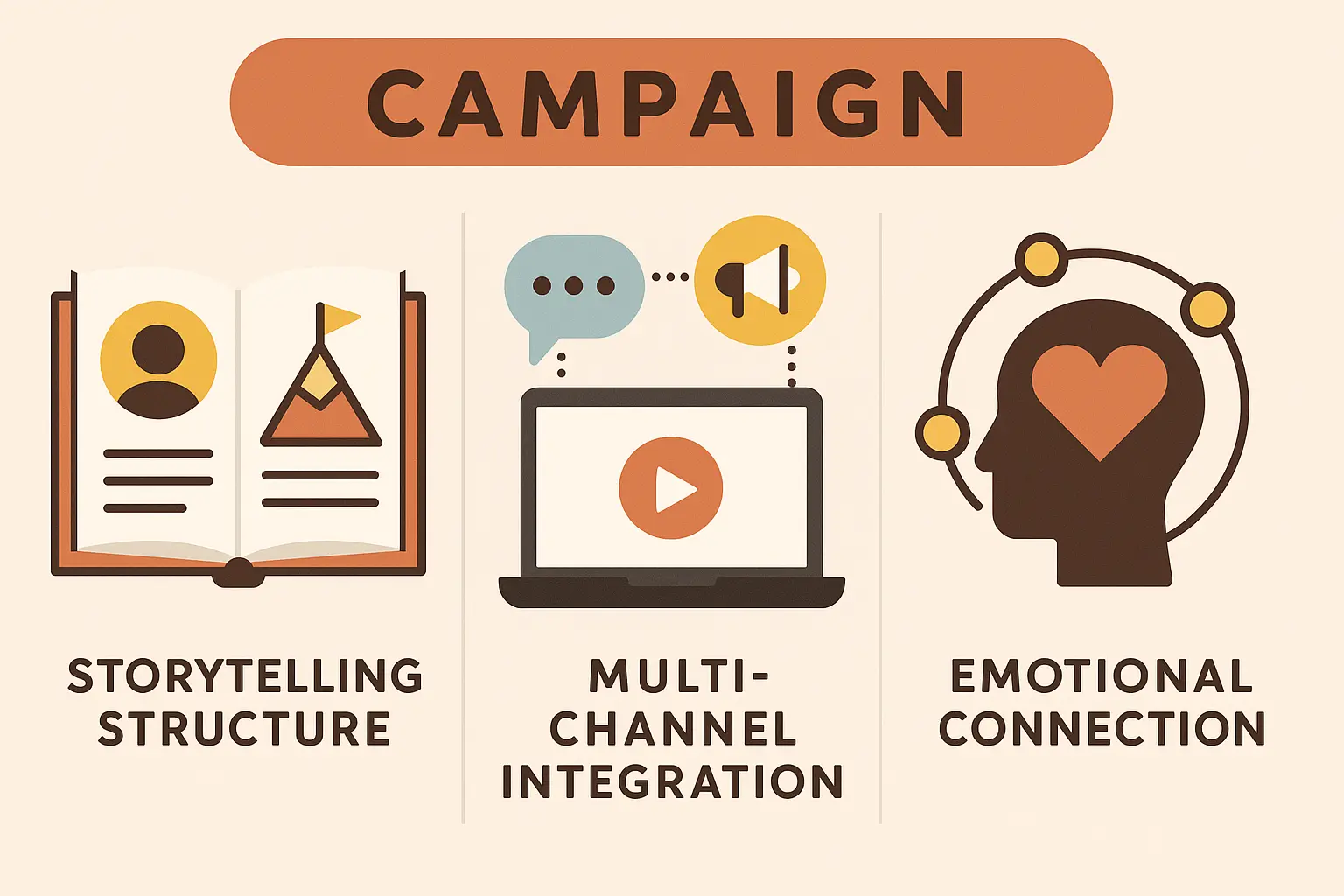
Storytelling That Connects With Real Emotions
The “Find Your Greatness” campaign was genius because it wasn’t about superhuman athletes. It was about that kid running down a country road, the person learning to skateboard at 40, the grandmother finishing her first 5K. These stories hit different because they’re achievable.
Nike doesn’t sugarcoat the struggle. Their campaigns show the 5 AM wake-ups, the failed attempts, the moments when you want to quit. That authenticity makes the victories feel earned, which creates way stronger emotional connections than just showing the highlight reel.
When you watch a Nike ad, you’re not just watching someone else succeed – you’re imagining yourself in their shoes. Literally. That’s the difference between advertising and inspiration.
Nike’s “Dream Crazy” campaign featuring Colin Kaepernick exemplifies their emotional storytelling approach. Rather than avoiding controversy, Nike crafted a narrative around believing in something bigger than yourself, even when it costs everything.
Multi-Channel Integration That Actually Works
Here’s what most brands get wrong about multi-channel marketing – they just blast the same message everywhere. Nike adapts their content for each platform while keeping the core message consistent.
Their retail stores become extensions of their campaigns. When they launch something like “Just Do It,” you feel it in the music, see it in the displays, even notice it in how the staff talks about products. Everything reinforces the same story.
The product integration is seamless. Campaign themes show up in actual product design, limited edition packaging, even the way products are merchandised online. It’s not just marketing talking – it’s the entire brand experience aligned.
Recent trade tensions have put Nike’s global supply chain strategy under scrutiny. According to “Nike, Trump Tariffs Impact Workers Prices” by ProPublica, Trump’s announced tariffs could include 46% on Vietnam, 32% on Indonesia, and 34% on China—countries where Nike operates 532 contract manufacturers employing nearly 1.2 million workers. This challenge demonstrates how external factors can impact even the most sophisticated marketing strategies.
Effective campaign measurement requires understanding performance across channels, which is why businesses often leverage marketing ROI calculators to track campaign effectiveness and optimize budget allocation across different touchpoints.
Innovation Marketing That Creates Demand Before Products Launch
Nike doesn’t just launch products – they create cultural events that people mark on their calendars. The anticipation becomes part of the experience.
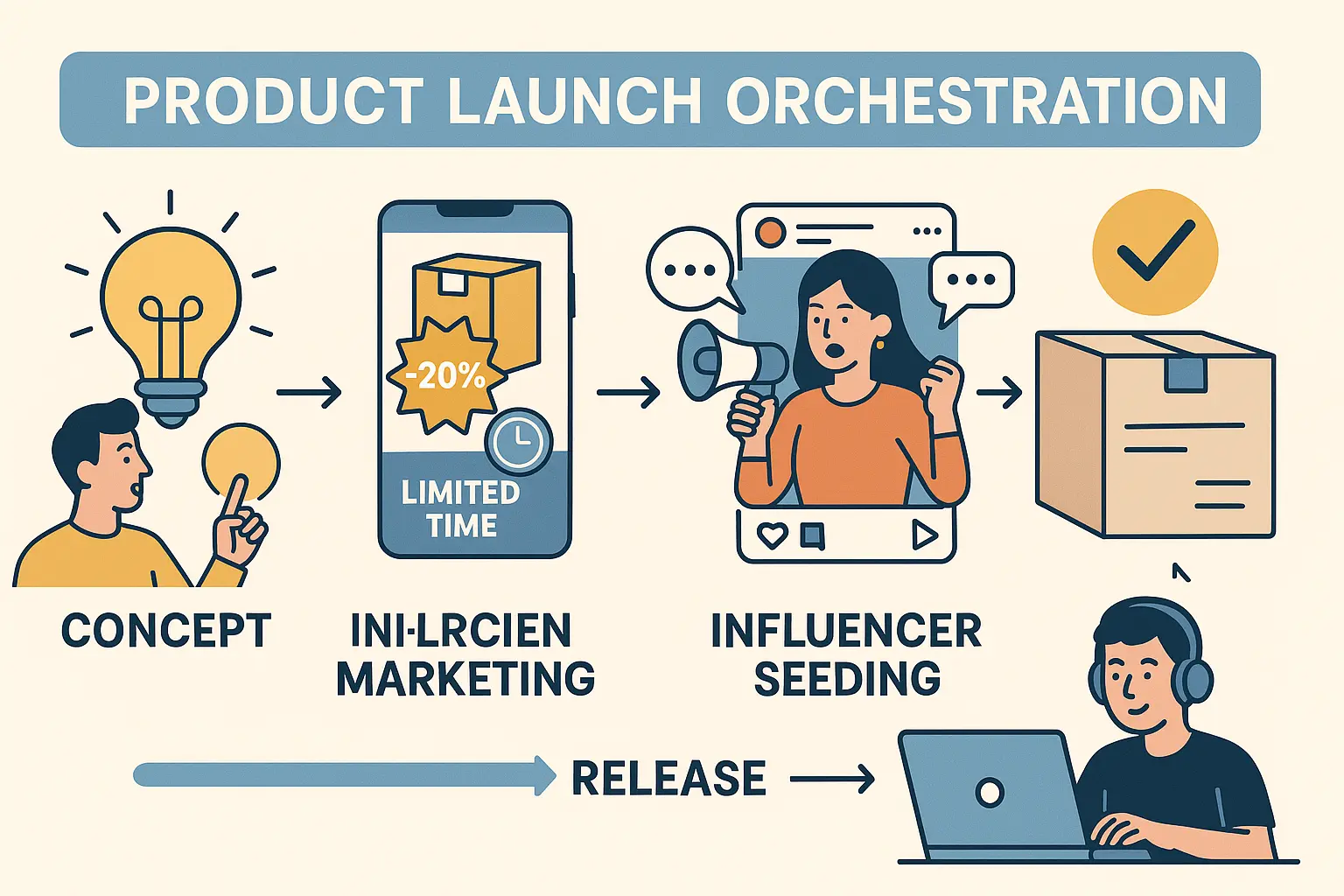
Product Launch Orchestration That Builds Hype
Months before a shoe drops, you’ll start seeing it on the feet of athletes and influencers. No official announcement, no marketing campaign – just organic curiosity building as people spot something they can’t buy yet.
The SNKRS app turned shoe releases into a game. You’re not just shopping – you’re participating in this exclusive event where timing, luck, and loyalty all matter. People set alarms for drops. That’s next-level engagement.
Their staged rollout approach is brilliant. Limited release to VIPs creates social proof. Broader release capitalizes on that momentum while maintaining exclusivity. By the time everyone can buy it, everyone wants it.
Technology Communication That Makes Sense
Nike explains complex innovations in terms anyone can understand. They don’t bore you with engineering specs – they show you how it makes you perform better.
When they introduced Flyknit technology, they didn’t talk about yarn construction methods. They showed you a shoe that fit like a sock and moved with your foot. The technical details mattered less than the performance benefits you’d actually experience.
Their demonstrations use real athletes in real situations. You see the technology working, not just hear about it working. That’s way more convincing than any specification sheet.
Nike also uses visual storytelling to explain complex innovations. Cutaway diagrams, slow-motion videos, and interactive demonstrations help customers understand and appreciate the technology without requiring technical expertise. This approach makes innovation accessible to all customers, not just tech enthusiasts.
Future-Forward Brand Positioning That Shapes Expectations
Nike doesn’t just respond to market trends—they create them. Their future-forward positioning makes customers believe that Nike is always working on the next breakthrough that will improve their performance.
The brand consistently teases future innovations and concepts, even when they’re years away from commercial release. This approach keeps Nike at the forefront of consumer consciousness and positions competitors as followers rather than leaders.
Their partnerships with technology companies and research institutions reinforce this future-focused image. Collaborations with Apple, partnerships with universities, and investments in emerging technologies signal that Nike is serious about pushing boundaries.
Nike’s concept products and limited releases serve as proof points for their innovation leadership. Even if most customers never buy these products, they reinforce the perception that Nike is constantly pushing the limits of what’s possible in athletic performance.
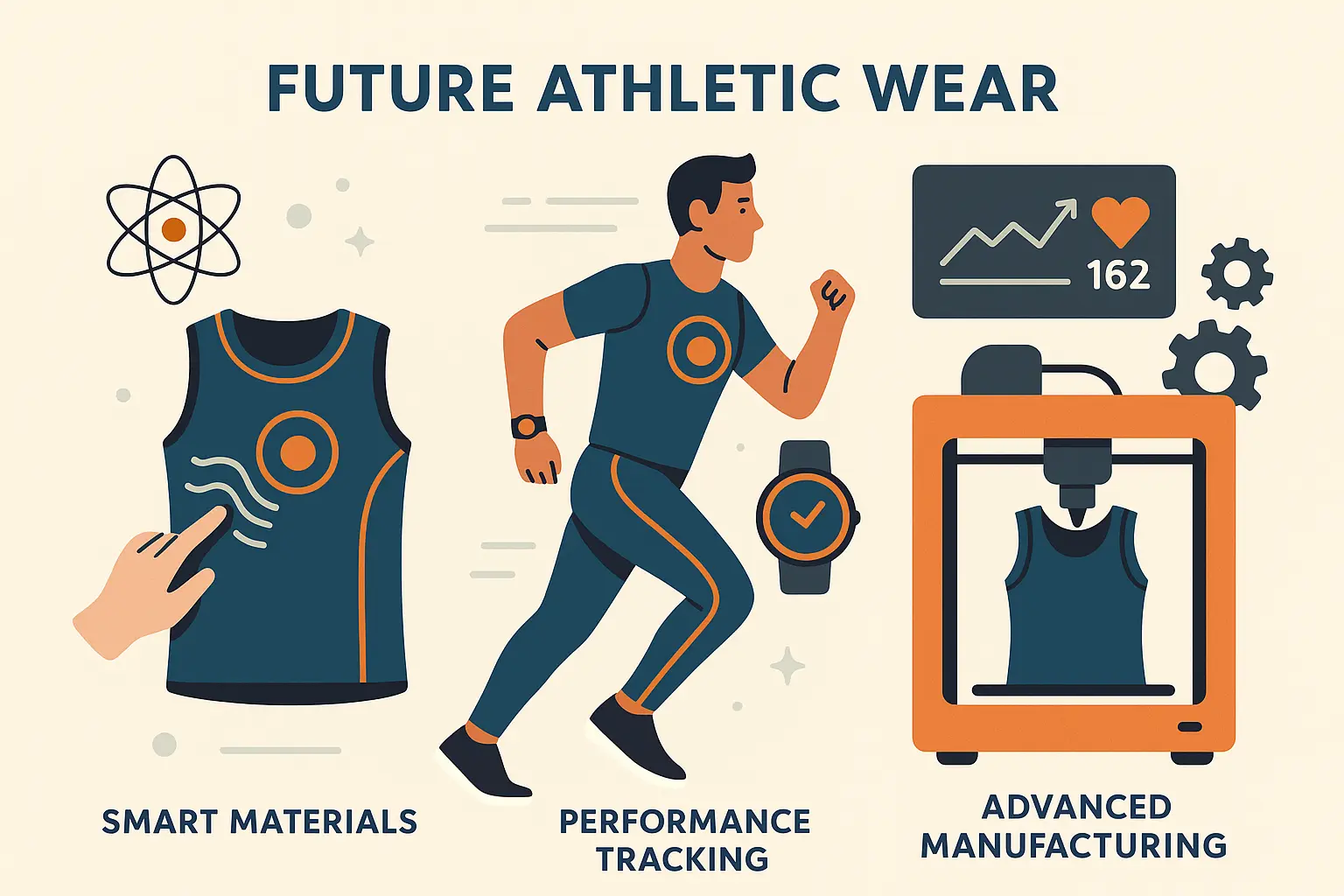
The Numbers Behind Nike’s Marketing Dominance
Nike’s success isn’t just creative – it’s backed by measurement systems that most brands can’t even comprehend.

Attribution Modeling That Reveals True Impact
Nike tracks customer journeys that span months or years. That Instagram ad you saw in January might contribute to a purchase you make in July. Most brands would never connect those dots, but Nike’s attribution system captures the full relationship.
They understand that modern customers don’t follow linear paths to purchase. Someone might see a TV ad, visit their website, follow them on social, visit a store, and make a purchase six months later. Nike gives credit to every touchpoint that contributed to that sale.
This sophisticated tracking lets them optimize their entire marketing ecosystem, not just individual campaigns. They can see which combinations of channels work best together and shift budgets toward the highest-performing combinations.
Nike’s global manufacturing scale demonstrates their market dominance, with the company working with 532 contract manufacturers that employ nearly 1.2 million workers across multiple countries, with Vietnam being their largest production base where 131 factories employ nearly 460,000 workers, producing half of Nike’s sneakers according to ProPublica’s analysis.
Understanding comprehensive performance measurement is crucial for success, which is why many enterprises utilize advanced analytics for strategic growth to track complex customer journeys and optimize marketing investments across multiple touchpoints.
Competitive Intelligence That Drives Strategic Decisions
Nike doesn’t just watch their direct competitors – they monitor emerging brands, cultural shifts, and consumer behavior changes that could impact their market position years down the line.
When they spot a threat or opportunity, they move preemptively rather than reactively. By the time competitors notice a trend, Nike’s already positioned to capitalize on it or neutralize the threat.
Their social listening goes way beyond brand mentions. They’re analyzing sentiment, tracking emerging influencers, and identifying cultural movements before they hit mainstream awareness. That’s how they stay ahead of trends instead of chasing them.
The market expansion approach uses competitive intelligence to identify underserved segments and geographic markets. Nike enters new markets with strategies specifically designed to counter existing competitors while establishing strong positions before new competitors arrive.
|
Competitive Analysis Framework |
Monitoring Areas |
Strategic Response |
|---|---|---|
|
Direct Competitors |
Product launches, pricing, marketing campaigns |
Preemptive positioning, counter-campaigns |
|
Emerging Brands |
Social media buzz, cultural partnerships, innovation |
Early acquisition or competitive response |
|
Market Trends |
Consumer behavior shifts, cultural movements |
Strategic pivots, new product categories |
|
Geographic Expansion |
Regional preferences, local competitors |
Localized market entry strategies |
|
Technology Disruption |
New materials, manufacturing, digital innovation |
R&D investment, partnership strategies |
Market Expansion That Builds on Strengths
Nike’s global expansion strategy maintains brand consistency while adapting to local markets. The core brand identity remains the same, but messaging, product mix, and marketing approaches adjust to local preferences and cultural norms.
Their localization goes beyond translation to include cultural adaptation. Nike sponsors local athletes, supports regional sports, and creates products specifically for local market preferences while maintaining the global brand standards that make Nike recognizable worldwide.
The expansion strategy focuses on building local relationships and partnerships rather than simply exporting their US approach. Nike works with local retailers, sponsors regional events, and develops relationships with local influencers and athletes who understand their markets better than any global campaign could.
Nike’s expansion challenges are highlighted by recent tariff impacts. According to ProPublica’s analysis, if the proposed 46% tariff on Vietnam goes into effect, the price of a $155 sneaker made in Vietnam would increase to $220, potentially forcing Nike to absorb costs or pass them to consumers, demonstrating how global expansion strategies must account for political and economic uncertainties.
Strategic Lessons You Can Actually Use
Here’s what you can steal from Nike’s playbook, regardless of your budget or industry.
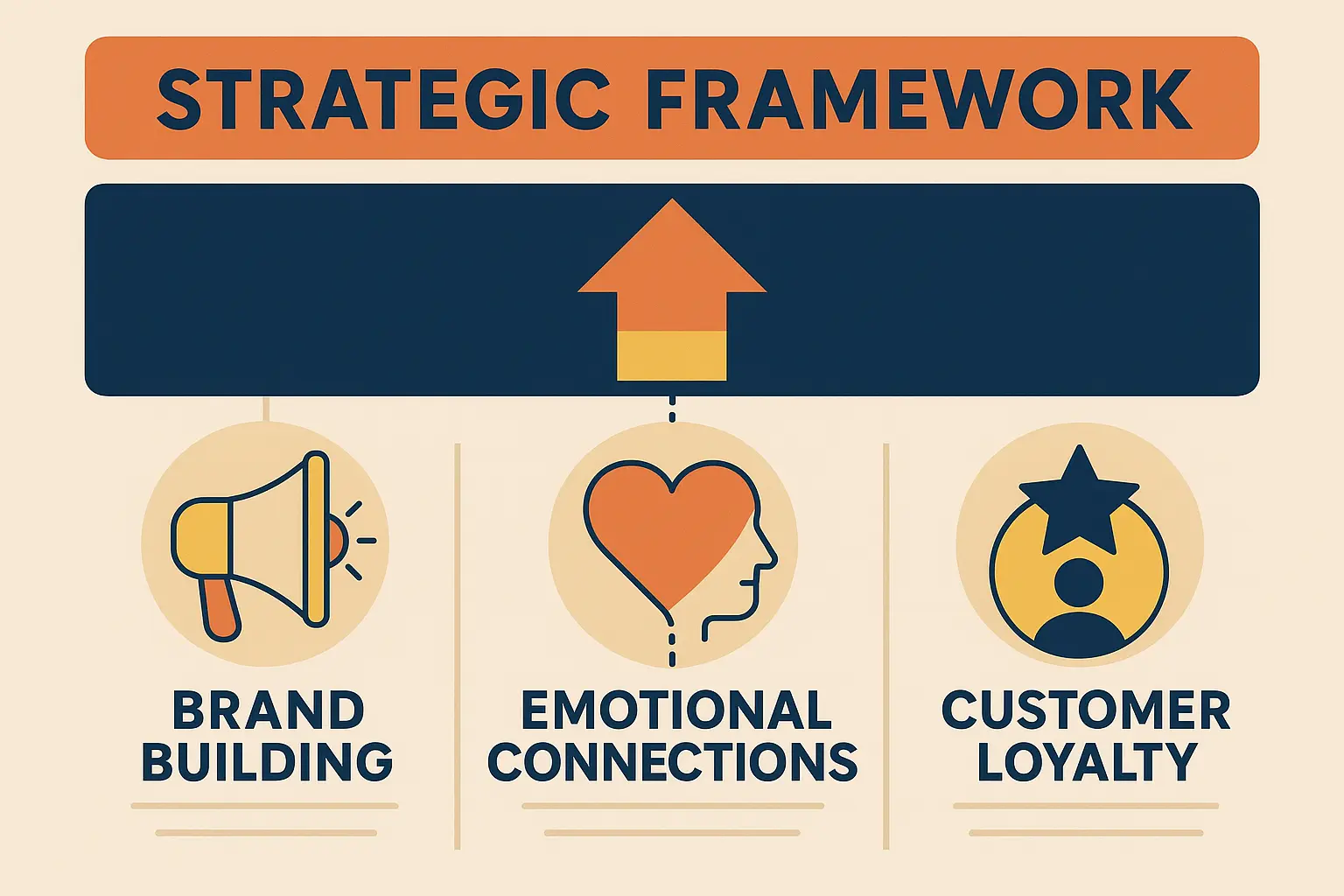
Brand Building That Creates Lasting Connections
Emotional connections beat product features every single time. People will pay more and stay loyal to brands that make them feel something meaningful, even when cheaper alternatives exist.
Consistency across every touchpoint builds trust over time. Whether someone encounters your brand online, in-store, or through customer service, the experience should reinforce the same core identity and values.
Authentic storytelling requires genuine alignment between what you say and what you do. Customers can smell fake authenticity from a mile away. Your brand story has to be backed up by real actions and commitments.
Connect your brand to customer aspirations, not just immediate problems. Nike doesn’t sell shoes – they sell the idea of becoming a better version of yourself. That aspirational positioning creates much stronger emotional bonds.
Patagonia exemplifies Nike’s brand building principles in the outdoor industry. Their “Don’t Buy This Jacket” campaign created an emotional connection by aligning with customers’ environmental values. The counterintuitive message actually increased sales because it demonstrated authentic commitment to sustainability, showing how brands can build loyalty through values-based positioning rather than traditional product promotion.
Authority Building That Establishes Market Leadership
Market authority comes from consistent innovation and genuine expertise, not just marketing claims. You have to actually advance your field and provide real value to earn credibility.
Strategic partnerships amplify your authority through association. When respected figures in your industry endorse or work with your brand, their credibility transfers to you.
Content that provides genuine value builds authority over time. Share your knowledge freely, help people solve problems, and demonstrate expertise through actions rather than just claims.
Take authentic positions on issues that matter to your audience. Having values and standing behind them, even when it’s controversial, builds stronger connections with customers who share those values.
Brand Authority Building Checklist:
-
Define core expertise areas and consistently create valuable content
-
Establish partnerships with recognized industry leaders and influencers
-
Take authentic positions on issues important to your target audience
-
Invest in research and development to drive actual innovation
-
Share knowledge freely to build trust and demonstrate expertise
-
Measure authority through brand perception studies and industry recognition
-
Maintain consistency between stated values and business actions
Building Your Own Brand Authority Framework
You don’t need Nike’s budget to apply these principles. The strategies scale to any size business.
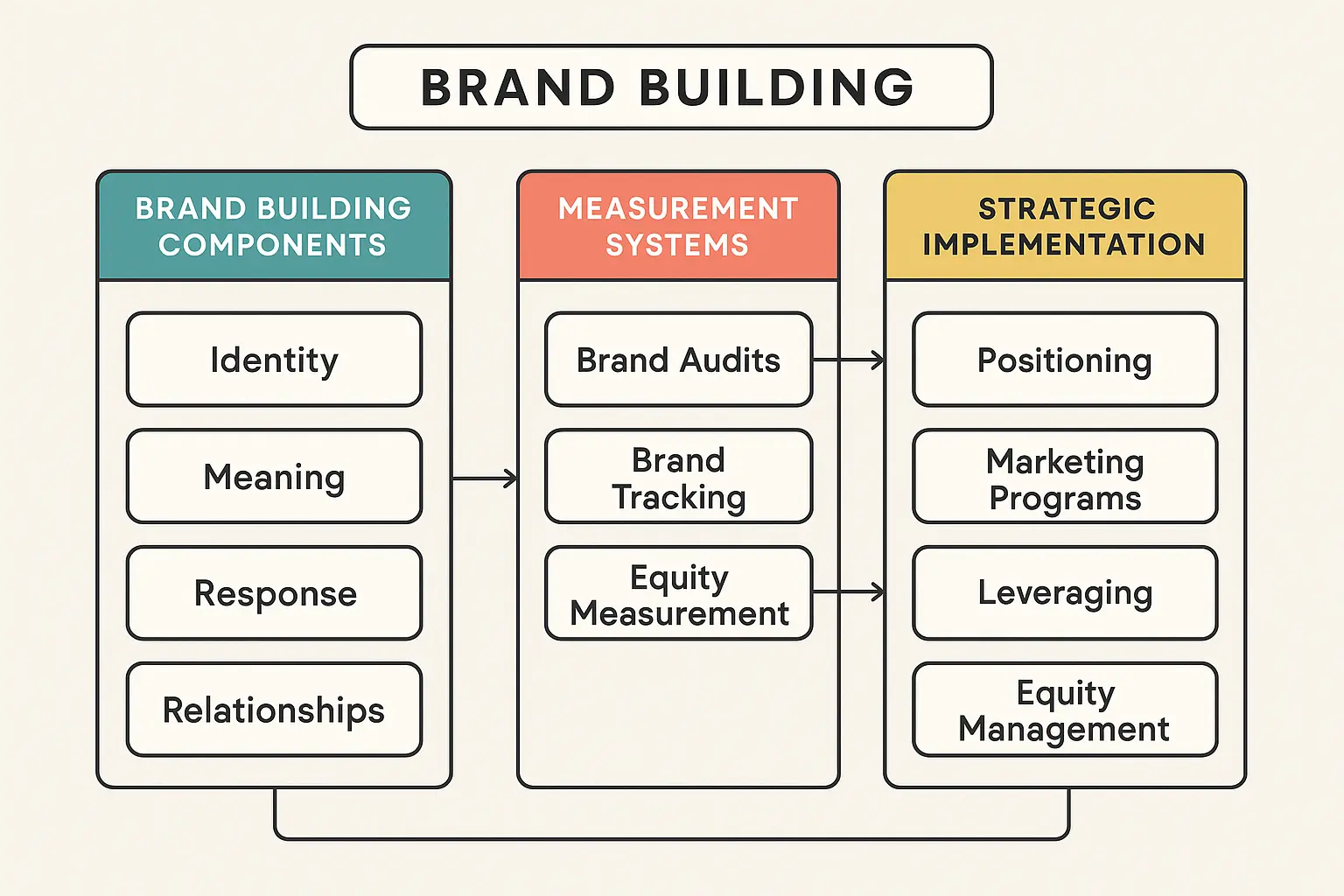
Brand Audit and Positioning Analysis You Can Do Today
Start by understanding how you’re actually perceived versus how you want to be perceived. Survey customers, analyze competitor messaging, and identify gaps in your positioning.
Map your competitive landscape beyond direct competitors. Include indirect alternatives and emerging threats to get a complete picture of what customers are choosing between.
Document your brand values and positioning in clear, actionable terms. This becomes your filter for evaluating every marketing decision, partnership opportunity, and strategic choice.
Analyze customer journey touchpoints to identify consistency gaps and optimization opportunities. Every interaction customers have with your brand should reinforce your positioning and move them closer to purchase and loyalty.
Brand Audit Template:
Current Brand Perception:
-
Customer survey results on brand attributes
-
Social media sentiment analysis
-
Competitor comparison matrix
-
Brand awareness and recall metrics
Positioning Opportunities:
-
Underserved market segments
-
Competitive differentiation gaps
-
Emerging trend alignment
-
Value proposition refinement
Consistency Analysis:
-
Touchpoint messaging audit
-
Visual identity consistency check
-
Customer experience mapping
-
Internal alignment assessment
Digital Marketing Infrastructure That Scales
Build systems that connect customer data across all your marketing channels. Your email, social media, website, and customer service should all contribute to unified customer profiles.
Implement marketing automation that nurtures relationships based on customer behavior and preferences. Automated sequences can deliver relevant content and offers that feel personalized.
Create content systems that adapt messaging for different platforms while maintaining brand consistency. Develop templates and processes that let you efficiently create platform-specific content.
Invest in analytics and attribution tools that help you understand which marketing activities drive the best results. Start with basic tracking and gradually add more sophisticated measurement as your marketing becomes more complex and your budget grows.
Building effective digital infrastructure requires understanding performance metrics, which is why many businesses utilize ROAS calculators to measure return on advertising spend and optimize their digital marketing investments across channels.
Digital Marketing Infrastructure Checklist:
-
Implement customer data platform (CDP) for unified profiles
-
Set up marketing automation workflows for lead nurturing
-
Create content templates for multi-channel adaptation
-
Install tracking pixels and analytics across all touchpoints
-
Establish social media management and scheduling systems
-
Build email segmentation and personalization capabilities
-
Develop mobile-responsive website with conversion optimization
-
Create customer service integration with marketing data
Performance Measurement That Guides Decisions
Establish baseline metrics before implementing new strategies. You need to know where you started to measure improvement accurately.
Track leading indicators that predict future performance, not just lagging indicators that report past results. Customer engagement and brand sentiment often signal future sales trends.
Implement attribution tracking that connects marketing activities to business results over longer time periods. Many purchases happen weeks or months after initial marketing exposure.
Use performance data to make real-time optimizations and strategic decisions about where to invest your marketing budget for maximum impact.
HubSpot exemplifies sophisticated performance measurement by tracking the entire customer journey from initial blog visit to closed deal. They measure not just immediate conversions but also content engagement quality, lead scoring progression, and customer lifetime value attribution. This comprehensive approach allows them to optimize their inbound marketing strategy based on which content types and channels drive the highest-value customers, similar to Nike’s multi-touchpoint attribution modeling.
Comprehensive performance tracking often requires understanding SEO impact alongside other marketing efforts, which is why businesses frequently use SEO ROI calculators to measure the long-term value of organic search investments and their contribution to overall marketing performance.
The Marketing Agency specializes in implementing these data-driven marketing strategies for businesses ready to move beyond guesswork. Their scientific approach to marketing measurement and optimization helps companies achieve Nike-level marketing sophistication at scales appropriate for their business size and budget.
Whether you need help with PPC management, comprehensive inbound marketing, or building integrated digital marketing systems, The Marketing Agency provides the expertise and infrastructure to implement proven strategies that drive measurable results.
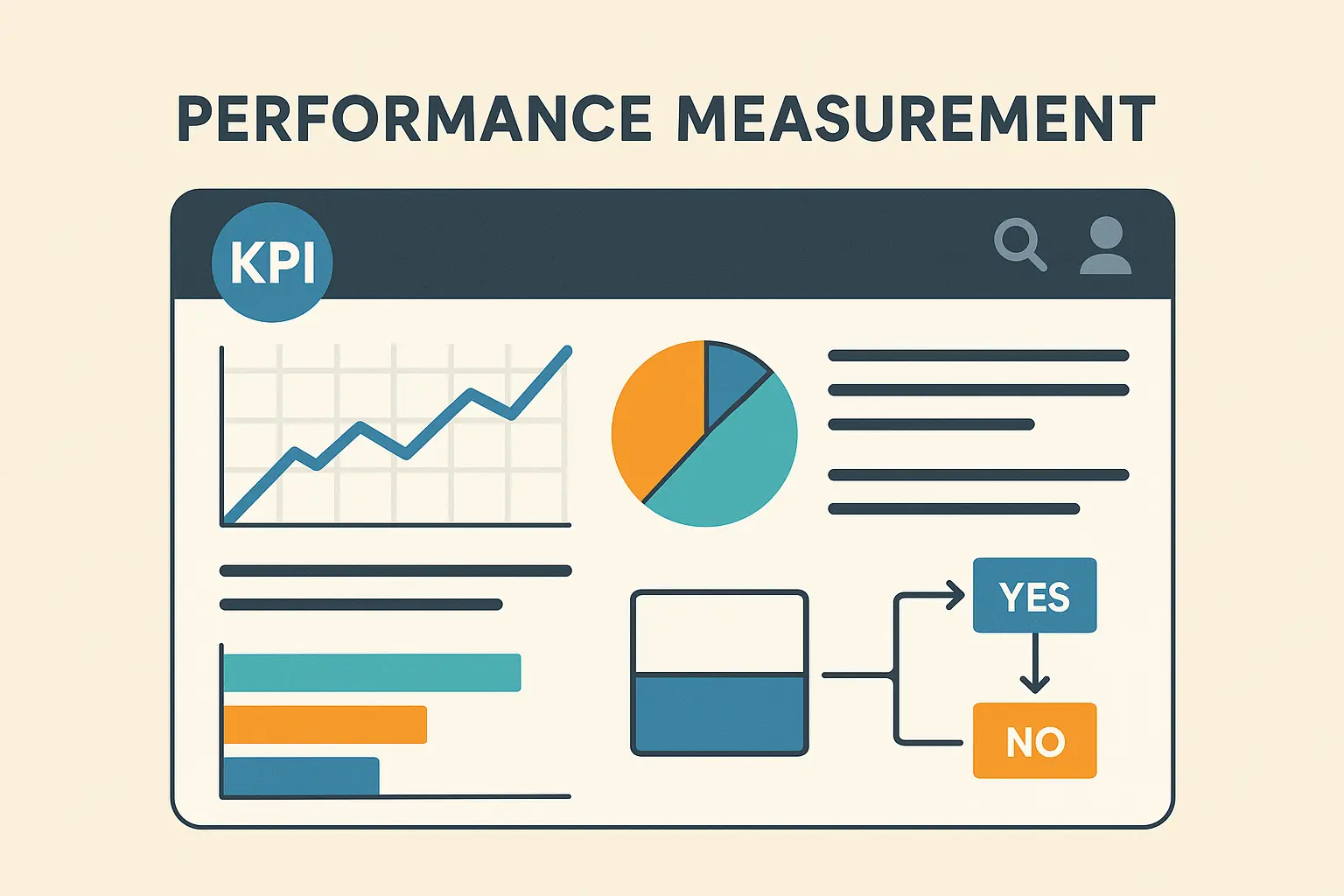
Final Thoughts
Nike’s transformation from shoe company to lifestyle brand proves that marketing excellence requires more than creative campaigns – it demands strategic thinking, consistent execution, and sophisticated measurement.
Their success comes from understanding that customers don’t buy products – they buy better versions of themselves. This insight drives everything from emotional branding to personalized experiences, creating relationships that withstand competitive pressure.
The lessons from Nike apply to any business because they’re based on fundamental human psychology and market dynamics. You don’t need their budget to build emotional connections, create consistent experiences, or implement data-driven optimization.
What separates Nike from competitors isn’t just their marketing budget – it’s their systematic approach to building authority, measuring performance, and optimizing customer experiences. These capabilities can be developed by any business willing to invest in the right infrastructure and expertise.
The bottom line? Nike didn’t become Nike by accident. Every success was built on strategic decisions, consistent execution, and relentless optimization. The principles are learnable, the tactics are scalable, and the results speak for themselves.



